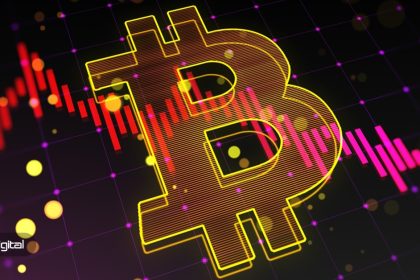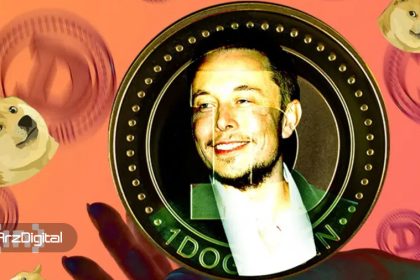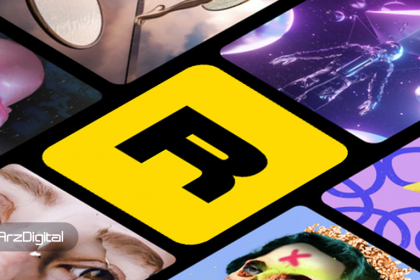Smart contracts implemented on the blockchain platform have a high potential to increase efficiency as well as reduce transaction costs in many industries. The smart contract reduces the risk of breach of contract between the transaction parties and creates transparency, but it still has limitations. One of these limitations is the need for external data and technology Oracle It was created to solve this limitation.
In this article we examine that What is Oracle? And what are its types and how it transfers information from the outside world to the blockchain world. We will also have a look at the current problems of oracles and ways to improve them. Stay with us.
What is Oracle?
Oracle One Applied technology in the world Blockchain is that Information from the outside of smart contracts to the inside and information from the inside to the outside Transfers. Sometimes smart contracts need real-world information outside the blockchain. Oracles provide this information. For example, an oracle can provide price information to a smart contract created to sell or rent real estate.
Oracles and smart contracts
The concept of smart contracts was first proposed by Nick Szabo in the early 1990s, and his prediction regarding their implementation and application came true in an interesting way!
At a high level, a smart contract is a computer program consisting of codes that define its function and state. Smart contracts are usually executed on a blockchain automatically, fully transparently, under certain conditions and in a decentralized network. Since smart contracts run on blockchains, they are immutable.
Read more: What is a smart contract? How does Smart Contract work?
By using smart contracts, intermediaries are eliminated and transaction costs are reduced. The application of these contracts is based on codified parameters and varies from legal contracts to payment systems.
Despite their obvious benefits, smart contracts do not have much capacity due to being limited to on-chain data of a blockchain. Interaction with the real world as well as execution under conditions outside the blockchain network where they are located are among the limitations of these contracts.
What are the uses of oracles?
The idea of oracles as well as decentralized oracles has been proposed for several years and discussions have been raised about how to implement and trust them.
Oracles retrieve and verify data from external sources through web APIs and market data for blockchains and smart contracts. The data that smart contracts need include information such as prices, weather, or even generating random numbers for gambling.
Oracles are placed between the blockchain and data sources and provide the information required by the blockchain by executing queries. Therefore, smart contracts can be executed based on the information provided by oracles.

Data sources in real-world markets and web APIs, such as blockchains and smart contracts, are not deterministic. Oracles act as a bridge and transform this external and uncertain information into an understandable and executable format for the blockchain.
In fact, these oracles form the basis of platforms such as Augur. Agar is a decentralized prediction market that has a complex oracle that takes user behavior as input. Augur also uses oracles to report the results of accurate market predictions.
Types of oracles in blockchain
The main types of oracles that we deal with today are:
- Hardware oracles
- Software oracles
- Consensus based oracles
- Incoming oracles
- Output oracles
Hardware oracles

There are sensors that are integrated with tangible physical objects. Supply chain tracking using radio frequency identification system (RFID) tags to record information such as the environmental conditions of products and goods inside the blockchain is an example of this type.
Software oracles
The most common type are oracles that can pull data from other sources, such as web APIs, and can also include real-world information such as flight status and weather.
Consensus based oracles
These types have taken a step towards decentralized oracles and rely on collecting information from several oracles with specialized methods and determining their validity and accuracy.
Incoming oracles
They are associated with scenarios such as “if it happens then do it” and with software oracles that say “if this price matches the current asset then do the purchase”.
Output oracles
They allow smart contracts to send data to sources outside of the blockchain network on which they reside.
The problems of oracles
The extraordinary ability of oracles to connect off-chain and on-chain data as an intermediary between traditional networks and blockchain networks has important long-term implications. However, The main problem is that these oracles originate from centralized sources that usually require external permissions, and this is where blockchain has a problem.

Jimmy Song has provided a good analysis of the fundamental problems with oracles and smart contracts. The problems of oracles More in context security, Validity And the trust occurs between other oracles and the unreliable execution of smart contracts.
In the context of connecting a physical asset to the blockchain, oracles have no ability to verify ownership of an asset, such as when a house is transferred to another person, without a third party, even if the new owner keeps a token on the blockchain that represents ownership.
Ownership in smart contracts does not always transfer to real-world ownership. As a result, the smart contract in the form of an oracle requires the process of verifying events from other departments.
Oracle's best blockchain projects
The best Oracle projects are those that solve many of Oracle's problems by creating decentralized solutions, using consensus-based oracles, decentralized markets, and new authentication methods.
The best Oracle projects that we intend to introduce and review in this section are:
- Chain Link
- Band Protocol
- API3
- Pyth Network
- Flare Network
Chain Link
Chainlink offers an attractive decentralized solution for validating data provided through Oracle as well as smart contract output data. Chainlink realized the problem that the centralized Oracle has a single point of failure and proposed a solution to create a middleware that includes Oracle's decentralized network. Most importantly, China will identify and validate the data link before it is used in smart contracts.

Chainlink's on-chain interface consists of oracle nodes that respond to queries generated by smart contracts. The in-chain interface consists of three components:
- Legal contract
- Contract according to the order
- Collection contract
Legal contract: It uses a proprietary method to collect and track data from Oracle service providers.
Contract according to the order: Receives a Service Level Agreement (SLA) and registers data components at the same time as receiving bids from Oracle providers.
Collection contract: It gathers the answers of the Oracle providers and calculates the final result of the initial query of the chain link.
Aggregating data from multiple oracles eliminates dependency on a single system and helps ensure data integrity. Data from Oracle providers is also sent back to the credit agreement to manage Oracle's accuracy through a validation system.
Using a Service Level Agreement (SLA) is critical to the Oracle selection process. Users requesting oracle data can explicitly identify the parameters and inputs they are looking for, as well as the number of oracles they wish to use.
The distributed source of the Oracle Chainlink platform and its data collection is more efficient than methods that directly use an external data source.
Band Protocol
Protocol Band is a decentralized oracle with a focus on scalability and flexibility. The project uses the Delegated Proof of Stake consensus mechanism for its network of Oracle nodes.
Band protocol has a native token called BAND, which is a tool for governance and maintaining network security. Validators stake their BAND tokens and thereby contribute to the security of the network. Of course, they receive rewards for this work.
Read more: What is staking? Complete training on staking or investing in digital currencies
Another positive feature of the protocol is its interactivity with different blockchains. The ability to transfer information between different chains is a practical and important possibility that the protocol section supports.
API3
API3 is a project that connects traditional APIs to blockchain. This project actually allows API providers to run their own nodes and thus provide data directly to blockchains without the need for intermediaries.
This unique API to smart contract interface, along with decentralized governance and efforts to eliminate intermediaries, has made API3 a successful project in the Oracle space. The creative approach of this project in connecting traditional data sources to the blockchain world has led to its success and popularity.
Pyth Network
Payet Network focuses on financial markets and offering pricing to blockchain applications. This project receives its data from several reliable sources and then transforms them into such a state. Frequent updates, focus on financial markets, and cooperation with professional data providers are among the strengths of Peyt Network.
Flare Network
Flair Network aims to facilitate the transfer of data between blockchains and the Internet. This project integrates Ethereum smart contracts with the Ollench consensus protocol. In this way, it guarantees speed along with security. Integration with Ethereum smart contracts along with support for non-Turing tokens such as Ripple can be considered the strength of Flair Network.
Read more: What is Ripple? Everything about Ripple and XRP digital currency
Frequently asked questions
A smart contract is a type of blockchain-based contract that is executed automatically and does not require an intermediary. Oracle is a different innovation that moves data from the real world outside the blockchain to the smart contract.
no Not all blockchain applications necessarily require Oracle.
The reliability and performance of the Oracle you choose plays an important role in this issue. It is better to pay attention to the data sources of oracles and the method of collection and transmission they use, and preferably use decentralized oracles that collect data from several different sources.
final word
To make a lasting impact on applications and industries, blockchain must be able to communicate with real-world data. This is difficult and challenging with oracles. So far, significant progress has been made in this matter, and the communication between blockchains and real data is a big step for the development of this technology.
RCO NEWS


















